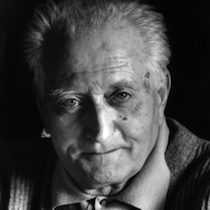
It is a travesty that Hill has struggled to remain in print in America. Unsentimental, sometimes absurd, but always a pleasure, Hill was originally published in French in 1929, and it’s been translated into English twice before Paul Eprile’s latest version. This is a title that should be on the radar of literary fiction readers and nature conservationists. It’s a novella that verges on poetry, activism, and modern fairytale, detailing an outsider farming community that loses control of what they thought they had mastered: the earth.
Like Renata Adler’s Speedboat, Hill is a choppy, fragmented story, jumping between characters without explanation, moving across days and experiences without warning. In terse, commanding sentences, it anchors you with a chronological story, but keeps you just disoriented enough to make you dizzy. Hill follows four families that sit atop a Provençal hill, far enough away from town that when one citizen calls for a doctor, it takes the doctor three hours to climb the hill to see the patient. Men sit around drinking homemade absinthe; they take on farming jobs. Women tend to their parents and children; they have a strong but quiet influence on the politics of the hill.
Janet, the oldest member of this community, has fallen ill. We never find out exactly how or why. But his most prominent ailment is that he has started to see the world differently. At first he thinks snakes are coming out of his fingers. He throws these snakes to the floor. Nobody else can see them slither away, which frustrates Janet further:
I’m ‘raving.’ And who do you think you are, to say I’m ‘raving’? . . . So you think you can see everything, do you, with your pathetic eyes? Can you see the wind too, you with your tremendous powers?
When you come right down to it, you’re incapable of looking at a tree and seeing anything but a tree.
This issue of differing perception comes to a head when the town’s water supply runs dry. Janet’s rants, his speaking in tongues, become much like a Shakespearean Fool’s monologue—nonsense but true. He knows that one of the women is having an affair with the village idiot. He claims that a cat he saw during the earthquake of 1907 will be a harbinger of the hill’s destruction. He’s trying to make people understand their inherent but forgotten relationship with Nature: “You realize something’s against you, but you don’t know what. . . . I bet you’ve never given any thought to the great power? The great power of animals, plants, and rock.”

The townspeople should be able to refute this accusation, but they don’t. Pages before Janet’s aforementioned diatribe, Janet’s son-in-law Gondran, while hoeing his land, is frightened by a lizard and with great force strikes it with his spade. “Man wants to be the master-beast, the one who kills,” the narrator states. The lizard’s guts ooze from its body, its blood reddens the earth. But all of a sudden Gondran goes ill, subconsciously understanding that he’s destroyed a part of nature and taken a life. Shame overtakes him.
Is he directly to blame for the suffering of plants and animals?
Can he not even cut down a tree without committing murder?
It’s true, when he cuts down a tree, he does kill.
And when he scythes, he slays.
So that’s the way it is—is he killing all the time? Is he living like a gigantic, runaway barrel, leveling everything in his path?
So it is really all alive?
Janet has figured this all out ahead of him.
Everything: animals, plants, and who knows, maybe even the stones too.
So, he can’t lift a finger anymore, without unleashing streams of pain?
Nobody learns from these realizations by the climax of the novella. Nobody can maintain a symbiotic relationship to the earth and those concerned for it.
More important than these human characters is the character of Nature. She weaves herself into everything—what the people on the hill have created, what they act upon, what they don’t even consciously perceive. She pervades the narrator’s voice, his metaphor and descriptions. We get lines like “Up there among the hills, where earth’s flesh folds in thick rolls”; “They fill their hours with expansive dreams of dancing, silver waters”; “Doubt is bristling inside him like a thistle”; and the earth is “making its massive, granite limbs grind to the very center of heaven.” These are a true blending of the human and the natural—one is completely dependent on the other. Nature comes alive through anthropomorphism; human sentiment is understood through comparisons to the natural world.
Nature perhaps is the most human character in this story, perhaps who you’ll want to win in the end. Think of its performance in Hayao Miyazaki’s film Princess Mononoke, as the Forest Spirit god—representative of Nature’s lifeforce—is beheaded by ransom-obsessed hired assassins and goes on a rampage, destroying everything in its path. Even in death, Nature has what seems to be unlimited power. Without an understanding of how Nature gives and takes, nourishes and recycles itself, do humans have any right to lord over the earth? This novella isn’t afraid of saying the answer is no.




